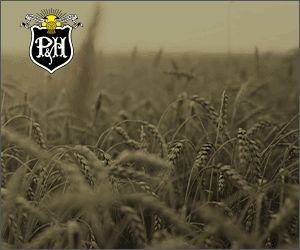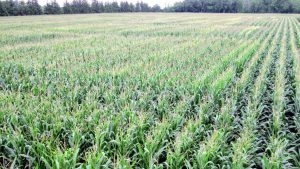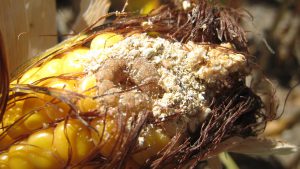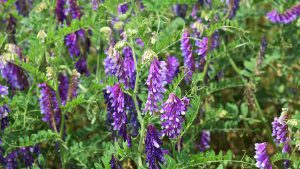Water management
IS IRRIGATION OF GRAIN CROPS FEASIBLE?
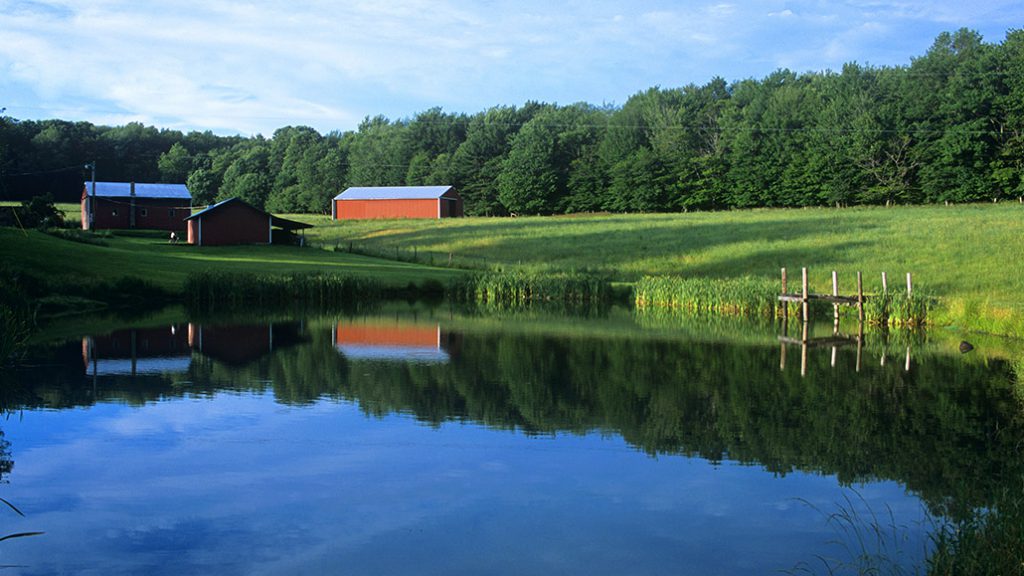
Water is a precious resource. The success of farm businesses and the health of our families depend on having a clean and abundant supply. Historically, agricultural technology has allowed us to manipulate the quantity and quality of water supplies to increase productivity. Today, this continues, with new technologies and a better understanding of natural processes. This article is the fifth in a series focusing on modern management of water for grain farms.
LAST MONTH, IN this water series, we explored drainage and the need and challenges associated with managing too much water in the off-season when the crops are not growing and using it. This month we follow with a critical look at whether storing some of that excess drainage water for later use as an irrigation supply is a good option.
In Ontario, rainfall is usually sufficient during the growing season, but some years and in pockets of the province there have been significant droughts causing poor yields, leading some to consider irrigation. If those drought years become more frequent and more severe, could irrigation be a key part of maintaining grain crop yields in Ontario’s future?
WATER LOSS
To answer these questions, the first thing we may want to assess is just how much water actually leaves via tile drainage systems in the non-growing season? Edge-of-field monitoring investigations sponsored by the Ontario Ministry of Agriculture, Food and Rural Affairs (OMAFRA) have shown that, depending on the year, between 140 mm — 210 mm (5.5” – 8.3”) rainfall equivalent of water can be expected to leave a field through its systematic tile drainage system.
Of course, the actual amount in a year depends on the field’s soil characteristics, the intensity of the drainage system, and rainfall amounts. Healthy soils with good structure and organic matter (OM) levels will tend to store more water within the soil root zone. Heavier soils, or those with poor structure or compaction which limit infiltration, will result in more overland runoff. Nevertheless, this amount of water drained in the non-growing season, if it could be stored for later use, is likely more than adequate to get through a typical Ontario drought.
To capture runoff/tile drain water for later use, however, requires a storage pond. The size of that pond depends on how much water might be needed in the summer months. Irrigation specialists in southern Ontario estimate that, keeping soil moisture at an optimal level for grain crops, typically requires two to three irrigation events applying 25 mm of water each time (75mm/summer on average). To irrigate a 40 hectare (100 acre) field, the water required would fill a 125 m x 125 m reservoir that is 4 m (12 ft) deep has a footprint of 3.9 acres (assuming sloped walls and 0.9 m (3 ft) freeboard). To construct this pond would therefore require four per cent of a field’s area to be used for water storage instead of production.
This drainage water storage effort would also require purchasing and operating irrigation equipment, such as a travelling gun or subsurface drip installations, to apply the water in a timely manner. Some have proposed that, instead of purchasing standard irrigation equipment, existing tile drains could be used to distribute the irrigation water underground across the field. This idea works best if fields are relatively flat and a naturally impermeable soil layer exists just beneath the tile lines to prevent downward water movement. These conditions, however, are not often present in most fields, making standard irrigation equipment the more likely approach.
Drain water capture for subsequent irrigation becomes more viable where: the existing site conditions favour drain water collection; the field is drought prone; and the crop has a high value.
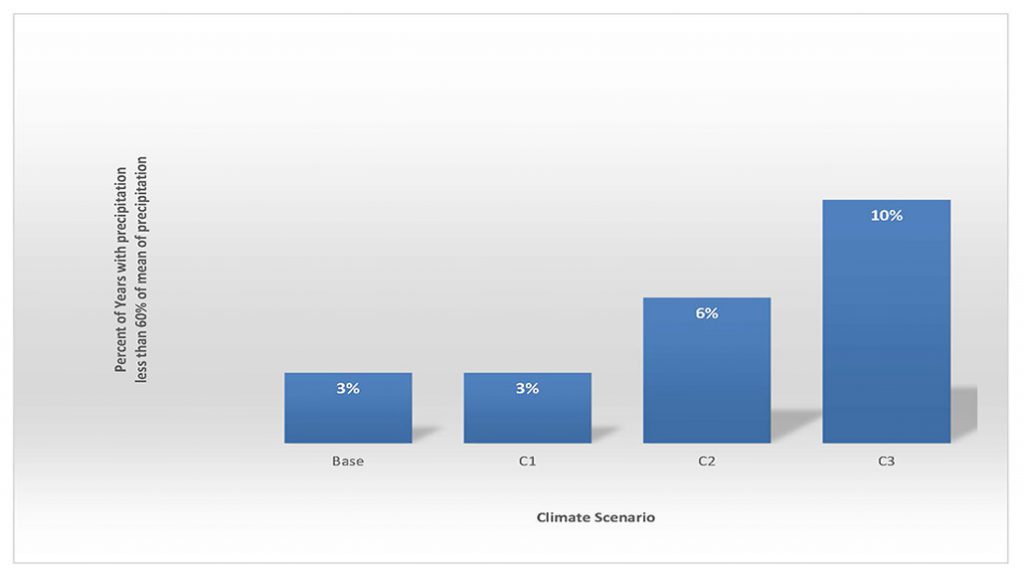
CLIMATE CHANGE
Could climate change affect the viability of all this? Climate modeling by Natural Resources Canada predicts that both temperature and precipitation will increase in the time period of 2020 – 2070. However, the variability may also increase, and this variability is likely to be greater for precipitation, leading to increased incidents of summer dry periods.
Dr. Qin Xu, a researcher at the University of Guelph, developed a model to look at corn and soybean yields under these models of future climate (Base, C1, C2 and C3) (Figure 1) and compared those modeled yields with and without irrigation.
Her modeling shows corn and soybean yields increase with the projected increasing temperatures and precipitation but that yield variability from year-to-year could also increase because of the possible increased variation in rainfall.
Irrigation increases both corn and soybean yield in the models. The projected difference in yield between irrigated and non-irrigated in 2070 ranges from two per cent to 11 per cent for corn, and two per cent to eight per cent for soybeans. These are the average increases, considering that there will be both wet and dry years.
In dry years, the benefits will be much greater. The ability to irrigate means that farmers can make use of the increased temperatures without the risk of yield losses that occur from potentially more variable rainfall. Xu’s model suggests irrigation has a larger positive impact on corn yields than soybean yields. This finding makes sense when we compare to a state such as Michigan with similar climate. Historically, Michigan farmers have adopted the practices of irrigating field crops more than Ontario farmers, but use the practice for the corn in their rotation, with very little soybean irrigation.
Dr. Xu also broke down yields on a county basis and there are clear differences between the regions of Ontario. The modeling shows that southern Ontario (Niagara to Lambton and south) could irrigate corn more frequently as compared to other parts of the province. If we consider operating costs only, irrigation benefits would outweigh the costs in southern Ontario approximately three years out of five by 2070 (depending on the climate scenario). However, this assumes no cost for labour and less than $1.03 in fuel or electricity to pump one acre-inch of water (102.8 m3).
Now let us add the capital costs to this economic evaluation. At a fixed cost of $1,200/acre, irrigation would only be profitable for a few counties in only a few years in the more extreme future climate likelihood scenario (C3) for 2020-2070.
If equipment costs could be reduced to $550/acre, approximately five – 10 counties could have profitable benefits from irrigation under the more extreme climate scenarios. In the later years (2054 to 2070) of this same future climate prediction and at the same equipment cost of $550/acre, the number of counties in the province where irrigation is profitable jumps to 20 (see figure 2).
A caution on this, however, if we consider the costs of developing a well or pond water supply (~$60,000) the number of counties where irrigation is profitable drops to less than five.
When we include both the operating costs ($1.03/acre-inch) and capital costs ($550/acre) but ignore costs for developing water supplies, there are few years where irrigation benefits outweigh the costs. For the complete results of this study see Dr. Xu’s Policy Brief posted with the online version of this article at www.ontariograinfarmer.ca.
“At current costs and with current climate conditions, irrigation is not economically attractive to field crop producers across Ontario,” says Xu.
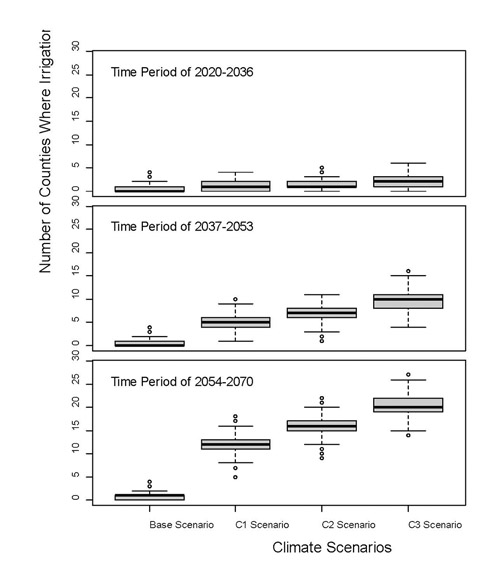
ECONOMICS
There are some things that might improve the economics. Operating on electric power will reduce the operating costs but the expense of bringing electricity to the pumping site must be considered. Equipment costs might come down with greater adoption and competition. Equipment could become more efficient. The available crop genetics is likely to continue to improve resulting in higher yield potential that could be captured by ensuring water stress is not a limiting factor.
Additionally, during the modeling study, other factors of improvement in crop input use efficiency, double cropping opportunities, among others were not considered and might change the equation for irrigation.
If water is not limiting, then all other production factors can be optimized financially and environmentally. If, as a grain farmer, you can use irrigation to increase yields with each acre, does this mean you can put in less acres of corn? Perhaps devote acres to other crops, such as cash crop hay which spreads risks and improves soil health among other things?
The increasingly high value of land is also driving the idea of irrigating grain crops. For example, if you have a contract or fixed volume of corn that you need to produce, and precipitation variability results in you missing your target, how can the demand be met? One option is to purchase more acres (knowing that in dry years the low yields across all acres will meet the target) or to invest in irrigation to ensure that the current acreage can consistently produce the target quantity of grain. With land costs of $10,000/ acre to $20,000/acre it may be better to invest in irrigation at $1,200/acre?
In general, consider that it is not profitable to irrigate just to meet your average yield in drought years. Irrigation must increase the yield/profit in every year in order for irrigation costs to be overcome by the benefits.
If drought losses are something you routinely experience, the next article in this series will walk through a case study exploring all the steps for implementing irrigation.
This article was written with contributions from Glenn Fox, University of Guelph. Rebecca Shortt, Kevin McKague, and Ian McDonald are with the Ontario Ministry of Agriculture, Food and Rural Affairs (OMAFRA). Qin Xu is with the University of Guelph. •
Other articles in the series:
• Producing the best grain crop possible (September 2020)
• The water cycle and why should we care (October 2020)
• The role of farm drainage (November 2020)
• Improvements through soil health (December 2020)
• A second look at farm drainage (January 2021)
• Is irrigation of grain crops feasible (February 2021)
• Irrigation case study (March 2021)
• Understanding groundwater (April/May 2021)


